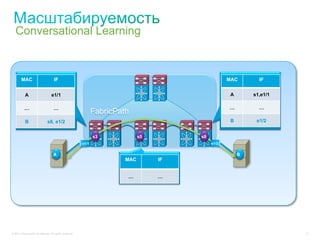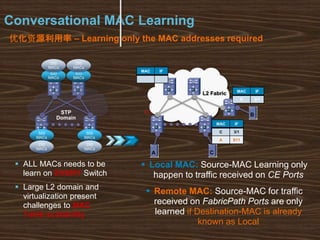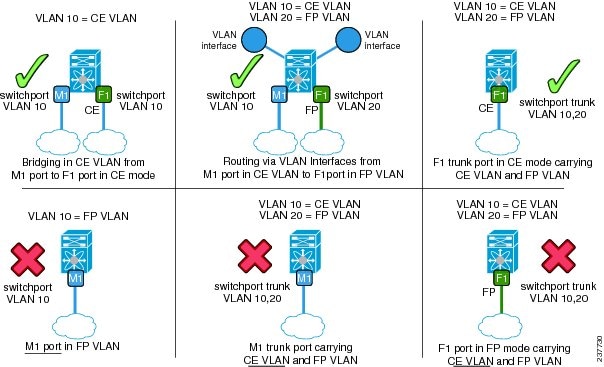

- #Cisco mac address table learning mode conversational manual#
- #Cisco mac address table learning mode conversational series#
- #Cisco mac address table learning mode conversational free#
If a manual configuration is performed, a check is done to prevent conflicts. By default, Switch-IDs are assigned via DRAP protocol but they can be manually assigned. Is a value that represent the switch inside a FabricPath topology. These devices only forward traffic based on the Switch ID. Spine Devices only connect to FabricPath topology. Spine DevicesĪre devices at the core of the FabricPath topology. Leaf devices are able to directly map MAC addresses to switch ports.

Leaf Devices connect both standard Ethernet Port and FabricPath port.
#Cisco mac address table learning mode conversational series#
On F series module, user-configured static MAC addresses are programmed on all forwarding engines that have ports in that VLANĪre devices at the Edge of the FabricPath topology. There is no support of hierarchical static MAC addresses or static routes. FabricPath ports cannot be put into a private VLAN. If different types of VLAN are inside the same private VLAN, they will not be active All VLANs in a private VLAN must be in the same VLAN mode (CE or FP). 
STP does not run inside a FabricPath topology.FabricPath interfaces can only carry FabricPath traffic.
 On Nexus 7000, FabricPath must be enable on F series module. The Enhanced Layer 2 licence is required. The FabricPath feature must be enabled on default and non-default VDC. Technical Overview Prerequisites and restrictions So Port-channel can be used and will count as 1 way. The 16 way ECMP can be avoided by using logical ports. The availability is kept if links are down. There is no need to configure Port-Channels and the bandwidth usage within the layer 2 domain is now constrained between Access and Distribution switches which can go up to 16 ways with ECMP. One big benefits is that FabricPath enables ECMP at Layer 2 with a current maximum of 16 ways and the latency is reduced by using the shortest path to the destination. Other option are enabled with FabricPath such as RPF and TTLing. Devices that do not support FabricPath can still be redundantly connected to two separate FabricPatch switches using vPC+.įabricPath uses ISIS for the routing part of the process, there is no need to know ISIS to configure FabricPath. These platforms can concurrently run Layer 2 technologies like FabricPath and Layer 3 Technologies. Nexus 5500 Series are able to run FabricPath. Nexus 7000 F1 and F2 Module (F-Series Modules). FabricPath SupportįabricPath is supported only on dedicated hardware : Switch addresses are automatically assigned and the routing table is computed for all unicast and multicast destination. The encapsulated frame is routed at Layer 2 by FabricPath until it reaches the destination switch where the de-encapsulation occurs and then delivered. These addresses represent the physical switch where the frame was received and the physical switch where the frame is destined. An Ethernet frame will be encapsulated inside the FabricPath header which is composed of routable source/destination addresses. FabricPath RoutesĬlassical Ethernet rules does not apply in a FabricPath topology. STP is not used inside a FabricPath topolopgy. This provides optimal delivery of layer 2 frames and optimal usage of the bandwidth between layer two ports whatever where they are located in the network. This leads to an increased usage of the resources and by so, network resources.įabricPath can deliver the fundamentals for a scalable fabric with a layer 2 domain that see itself like a big giant switch. Today trend is to move to virtualization and consolidation that allow multiple servers to be merged into one. For these reasons, Layer 2 is often confined to small islands that are interconnected through Layer 3. Additionally, large Layer 2 domain are more difficult to troubleshoot.
On Nexus 7000, FabricPath must be enable on F series module. The Enhanced Layer 2 licence is required. The FabricPath feature must be enabled on default and non-default VDC. Technical Overview Prerequisites and restrictions So Port-channel can be used and will count as 1 way. The 16 way ECMP can be avoided by using logical ports. The availability is kept if links are down. There is no need to configure Port-Channels and the bandwidth usage within the layer 2 domain is now constrained between Access and Distribution switches which can go up to 16 ways with ECMP. One big benefits is that FabricPath enables ECMP at Layer 2 with a current maximum of 16 ways and the latency is reduced by using the shortest path to the destination. Other option are enabled with FabricPath such as RPF and TTLing. Devices that do not support FabricPath can still be redundantly connected to two separate FabricPatch switches using vPC+.įabricPath uses ISIS for the routing part of the process, there is no need to know ISIS to configure FabricPath. These platforms can concurrently run Layer 2 technologies like FabricPath and Layer 3 Technologies. Nexus 5500 Series are able to run FabricPath. Nexus 7000 F1 and F2 Module (F-Series Modules). FabricPath SupportįabricPath is supported only on dedicated hardware : Switch addresses are automatically assigned and the routing table is computed for all unicast and multicast destination. The encapsulated frame is routed at Layer 2 by FabricPath until it reaches the destination switch where the de-encapsulation occurs and then delivered. These addresses represent the physical switch where the frame was received and the physical switch where the frame is destined. An Ethernet frame will be encapsulated inside the FabricPath header which is composed of routable source/destination addresses. FabricPath RoutesĬlassical Ethernet rules does not apply in a FabricPath topology. STP is not used inside a FabricPath topolopgy. This provides optimal delivery of layer 2 frames and optimal usage of the bandwidth between layer two ports whatever where they are located in the network. This leads to an increased usage of the resources and by so, network resources.įabricPath can deliver the fundamentals for a scalable fabric with a layer 2 domain that see itself like a big giant switch. Today trend is to move to virtualization and consolidation that allow multiple servers to be merged into one. For these reasons, Layer 2 is often confined to small islands that are interconnected through Layer 3. Additionally, large Layer 2 domain are more difficult to troubleshoot. #Cisco mac address table learning mode conversational free#
Non loop free Layer 2 domain leads to disaster sooner or later, an issue at one point on a Layer 2 domain will affect the entire Layer 2 domain. Typically Layer 2 is computed by STP because it needs to be loop free, this is accomplished by blocking some ports and the result is a loss of bandwidth. Today, Datacenters need to find a compromise between the flexibility offered by layer 2 technologies and scalability offered by layer 3 technologies. FabricPatch is designed to resolve the shortcomings of the traditional Layer 2 design.








 0 kommentar(er)
0 kommentar(er)
